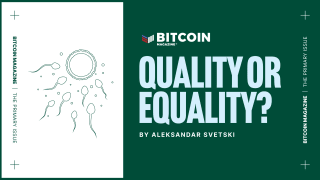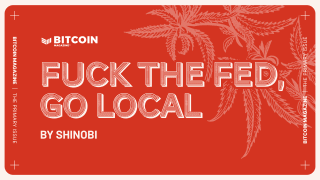
Written by: BigChubbyCat (8BTC)
Translated by: James Choi (8BTC)
Edited by: Elizabeth T. Ploshay (Bitcoin Magazine)
1. Tulip
In 1635, the price of a certain kind of tulip reached 1615 Florins. At the same time, the prices of four bulls and 1,000 pounds of cheese were only 480 Florins and 120 Florins respectively. The price of a tulip, however, kept soaring to a level the next year that one tulip of a rare species was sold at 4600 Florins. Additionally, the specific buyer also gave the seller a brand new carriage, two grey horses, and a whole set of harnesses.
Eventually someone woke up, and the bubble burst. At some point when someone tried to sell or even short sell his tulip, others followed. The mania to sell was soon as much as the mania to buy. The price then crashed and hundreds of thousands of people went bankrupt.
2. Bitcoin
On Nov 1 2008, someone who called himself (or herself) Satoshi Nakamoto published a paper in a private cryptography mailing list. The paper explained his or her new idea about this new e-money. On Jan 3 2009, the first fifty Bitcoins were created.
Unlike traditional currencies, Bitcoin does not rely on the support and endorsement from central banks, governments or enterprises, but rather on the network agreement reached by those nodes which are equal to each other. The decentralized self-improving mechanism theoretically ensures that no individual, entity or government can control the total amount of Bitcoin or create inflation. Its total amount gradually increases in a preset speed which becomes slower and slower, reaching its peak at 21 million by 2140.
On Nov 9 2013, the price of Bitcoin soared again, recording its new high in its exchange rate against RMB. As quoted by BTCChina, the rate reached 6989 RMB, with an increase of 53.6 percent. The rate against USD also recorded a historic high of 900.89 with a 31.6 percent increase.
Many people worry about the surging market and the soaring price discomfort, believing that Bitcoin might be another tulip mania.
3. Things in Common Between Tulip and Bitcoin
a. Neither tulip nor Bitcoin have a universal value in use.
b. The prices of both soared suddenly.
c. Both have a lot of participants and discussion in the media.
d. Neither of them is a product compulsorily made by governments.
4. Differences
Although the tulip bubble bursted, people didn’t know the reason behind the burst. The essence of the collapse was not because of high prices, but because there was not enough intrinsic value within a tulip.
The tulip failed on its way to becoming a currency. Its attribute of commodity could not meet the requirements of being a medium of exchange or a store of value, just like seashells, horns and stones which were defeated by gold and silver.
Given the commodity attribute of money, the physical attribute of a tulip is not satisfactory: perishable, dis-uniform, undividable… One could barely find any function of a tulip to become a currency.
As a normal commodity, the use value of a tulip is limited, as it can only be viewed or planted. In other words, even if an enterprise is established to produce and sell tulips, its profit and cash flow are very limited. Not all people appreciate tulips. When the price of tulips highly exceeded the balance of supply and demand, a plummet was inevitable.
Money is some common commodity which originated from the barter stage of market trade. Horns, seashells and feathers had played roles of money in different places at a different time, in order to meet the two indispensable demands of the market: The store of value, and the medium of exchange.
To meet these two demands, the attribute of the money itself should meanwhile be:
- Easy to divide;
- Imperishable;
- Transportable;
- The amount can not be controlled by anyone
The two traits of money are being indispensable and being unique to the market. Take diamonds for example. Diamonds have value as an adornment and they also function as a store of value, given their potential to rise in price. Yet, since diamonds cannot be divided, they do not meet the demand for the medium of exchange.
One must have the four attributes of money to meet the two demands of the market. The fatal defect of any monetary attribute would eventually lead to the collapse of the whole system.
The role Bitcoin plays is a virtual currency. Unless the price of Bitcoin highly exceeds its intrinsic value of real purchasing power, the price will keep increasing. Suppose that the total amount of oil on the earth is 21 million tons. If Bitcoin can be considered money, the price of oil is 1 ton per Bitcoin. If someone gives a quote of 36 tons per Bitcoin, the purchasing power of Bitcoin is then overestimated and the price of oil is underestimated. The market can self-adjust via price discovery. The so-called liquidity shortage won’t actually happen, as the market price is wrong, rather than a currency shortage. So there is no need for a central bank or a flexible currency. Before supply and demand can reach an equilibrium, Bitcoin can be unstable, and thus any soaring or plummet of price is possible.
In other words, if the demand of Bitcoin quickly decreases or even disappears, the price would plummet just like that of the tulip. This is when Bitcoin cannot meet the four attributes mentioned above. Bitcoin is waiting for the test and approval of the market. If the market accepts it eventually, the theoretical unit price of Bitcoin would be equal to 1/21,000,000 of the total value of Bitcoin-denominated commodities. And if the price of Bitcoin is higher than that price, it is a purchasing power bubble, which could be adjusted by the market itself.










